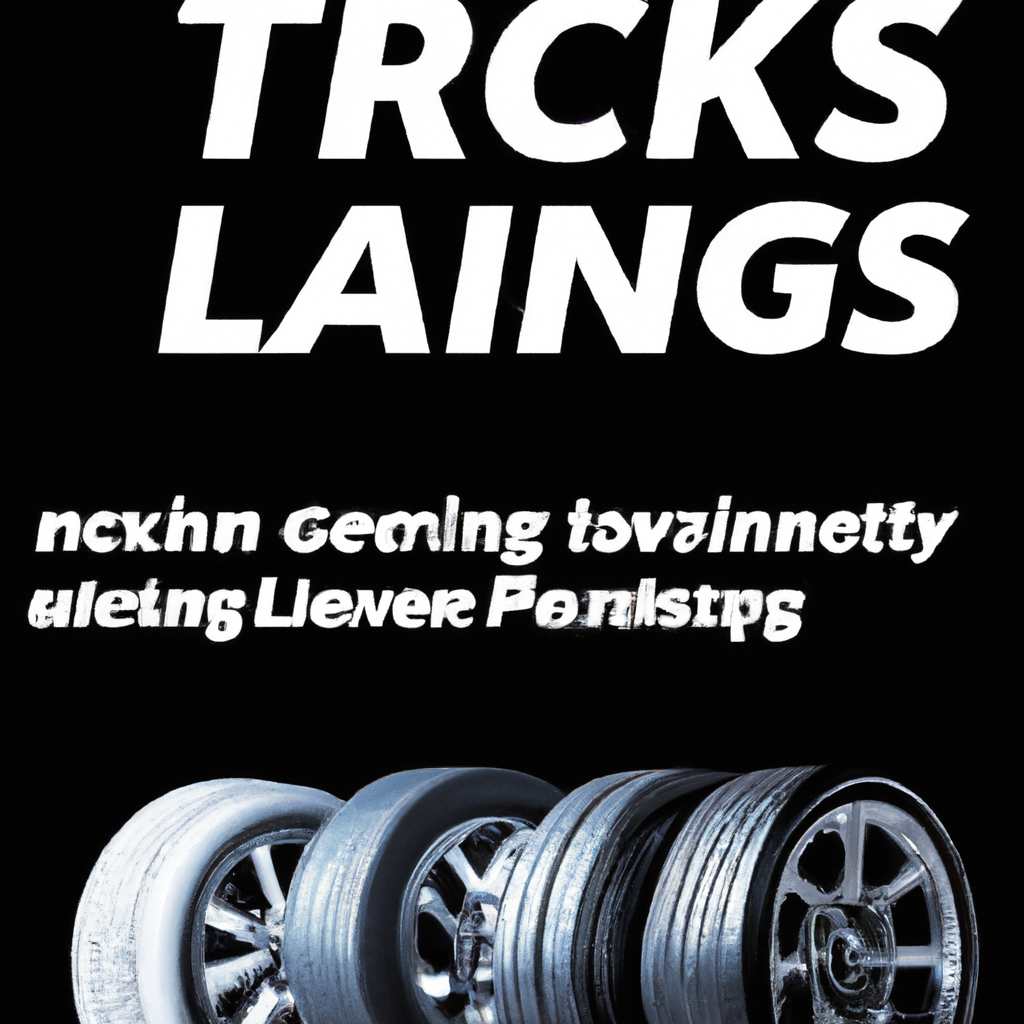If you’ve ever found yourself stranded on the side of the road with a flat tire, you know the frustration and inconvenience it can cause. Enter run-flat tires, a modern solution that allows you to continue driving even after a puncture. But just how far can you go on these ingenious tires? Are there any limitations to their capabilities? In this article, we will explore the driving distance limitations of run-flat tires and provide you with all the information you need to know before hitting the road. So buckle up and get ready to discover the potential of these innovative tires!

Definition of Run-flat Tires
Explanation of run-flat tires
Run-flat tires are specially designed tires that are able to continue functioning even after experiencing a puncture or loss of air pressure. These tires are equipped with advanced technology and features that provide extended mobility, allowing you to drive for a certain distance to reach a safe location or a tire repair shop. Run-flat tires aim to provide a higher level of safety and convenience in the event of a tire failure.
How run-flat tires work
Run-flat tires function through the use of reinforced sidewalls, which are able to support the weight of the vehicle even when the tire is completely deflated. This allows you to continue driving even after a puncture, eliminating the need to immediately stop and change the tire. Some run-flat tire systems also utilize a support ring or a self-supporting design, which further enhances the ability to drive with a flat tire.
Types of run-flat tire systems
There are several types of run-flat tire systems available in the market today. The most common ones include self-supporting run-flat tires and support ring systems. Self-supporting run-flat tires are constructed with reinforced sidewalls that can carry the weight of the vehicle, while support ring systems consist of an additional ring that supports the tire’s sidewall in case of a puncture. Each system has its own advantages and limitations, and the choice of system depends on the specific needs and preferences of the driver.
Advantages of Run-flat Tires
Increased safety
One of the major advantages of run-flat tires is the increased safety they provide. In the event of a puncture or loss of air pressure, run-flat tires allow you to maintain control of your vehicle and safely maneuver to a nearby location. This eliminates the need to stop in potentially dangerous situations such as busy highways or remote areas, where changing a tire can be risky. With run-flat tires, you can continue driving at a reduced speed to reach a safe destination, minimizing the risk of accidents or mishaps.
Convenience
Run-flat tires also offer a great deal of convenience. Instead of having to stop and change a tire immediately after a puncture, you have the freedom to continue driving for a certain distance. This can save you time, especially if you are in a rush or have a tight schedule. Additionally, run-flat tires eliminate the need for carrying a spare tire and the tools required for changing a tire. This not only saves space in your vehicle but also reduces the weight, resulting in improved fuel efficiency and handling.
Reduced weight and space requirements
Compared to traditional tires and spare tires, run-flat tires are typically lighter and require less space in your vehicle. The absence of a spare tire allows for additional cargo space and a more spacious trunk. This can be particularly beneficial for those who frequently travel or need extra storage capacity. Moreover, the reduced weight of run-flat tires contributes to better overall vehicle performance, including handling and acceleration.
Factors Affecting Driving Distance on Run-flat Tires
Tire design and construction
The design and construction of run-flat tires play a crucial role in determining the driving distance that can be achieved with a flat tire. The presence of reinforced sidewalls and advanced tire technology allows for greater stability and load-bearing capacity. Additionally, different tire manufacturers may use different materials and technologies, resulting in variations in driving distance capabilities. It is important to consider the specific design and construction of the run-flat tires you are using to understand their limitations and performance.
Speed limitations
While run-flat tires offer the ability to continue driving even with a flat tire, there are speed limitations that need to be adhered to. Driving at high speeds for an extended period of time with a flat run-flat tire can lead to increased heat build-up, which can negatively impact the tire’s performance and potentially cause further damage. It is important to follow the manufacturer’s guidelines regarding speed limitations to ensure the safety and longevity of the tire.
Load capacity
The weight of the vehicle and the distribution of the load can also affect the driving distance that can be achieved on run-flat tires. Heavier vehicles may put more strain on the tires, reducing their ability to carry the weight for an extended period of time. It is important to consider the recommended maximum load capacity of the run-flat tires and ensure that it is not exceeded to maintain optimal performance and driving distance.
Road conditions
The condition of the road, including the surface quality and any potential obstacles, can impact the driving distance on run-flat tires. Rough roads, potholes, and curbs can increase the stress on the tire and potentially compromise its performance. It is important to drive with caution and avoid road hazards as much as possible to ensure the longevity and effectiveness of your run-flat tires.
Tire Design and Construction
Reinforced sidewalls
Run-flat tires feature reinforced sidewalls that provide the additional support needed to carry the weight of the vehicle in the event of a flat tire. These sidewalls are made from special materials and are designed to withstand the increased stresses and strains that occur when driving with a deflated tire. The reinforced sidewalls contribute to the overall stability and load-bearing capacity of run-flat tires, allowing for continued mobility and driving distance.
Self-supporting run-flat tires
Self-supporting run-flat tires are designed with a unique construction that enables them to support the weight of the vehicle even when the tire is completely deflated. The materials and structure used in self-supporting run-flat tires provide the necessary rigidity and strength to maintain the tire’s shape and carry the load. This type of run-flat tire system allows for extended driving distance and eliminates the need for additional support mechanisms.
Support ring system
Another type of run-flat tire system is the support ring system. This system includes an additional ring or band that supports the sidewall of the tire in the event of a puncture or loss of air pressure. The support ring prevents the tire from collapsing and provides the necessary strength to continue driving. This type of run-flat tire system offers enhanced stability and load-bearing capacity, ensuring a certain level of driving distance even with a flat tire.

Speed Limitations
Manufacturer guidelines
To ensure optimal performance and safety, it is important to follow the manufacturer’s guidelines regarding speed limitations for run-flat tires. Each tire manufacturer may have specific recommendations regarding the maximum speed that should be maintained when driving with a flat run-flat tire. Exceeding these speed limitations can increase the risk of tire failure, reduced driving distance, and potential damage to the tire. Adhering to the manufacturer’s guidelines is essential for maintaining the longevity and effectiveness of run-flat tires.
Impacts of high speeds on run-flat tire performance
Driving at high speeds with a flat run-flat tire can have negative impacts on its performance and durability. The increased heat generated due to the friction between the tire and the road can cause further damage to the tire, reducing its ability to support the weight of the vehicle and limiting the driving distance that can be achieved. It is important to drive within the recommended speed limits and avoid excessive speeds to ensure the safety and efficiency of run-flat tires.
Load Capacity
Effect of vehicle weight on driving distance
The weight of the vehicle and the distribution of the load can affect the driving distance that can be achieved on run-flat tires. Heavier vehicles place more strain on the tires, reducing their ability to carry the weight for an extended period. It is important to consider the recommended maximum load capacity of the run-flat tires and ensure that it is not exceeded. Overloading the tires can lead to decreased performance, reduced driving distance, and potential tire failure.
Recommended maximum load capacity
Each run-flat tire has a recommended maximum load capacity specified by the manufacturer. This indicates the maximum weight that the tire can carry while maintaining optimal performance and safety. It is important to adhere to these recommendations to ensure that the tires can effectively support the weight of the vehicle and provide the expected driving distance. Exceeding the maximum load capacity can result in reduced performance, compromised safety, and potential tire damage.

Road Conditions
Effect of road surface on run-flat tire performance
The condition of the road surface can significantly impact the performance and driving distance of run-flat tires. Rough roads, uneven surfaces, and potholes can increase the stress and strain on the tires, potentially leading to reduced performance and a shorter driving distance. It is important to drive with caution and avoid road hazards as much as possible to minimize the risk of tire damage and ensure the longevity of run-flat tires.
Pothole and curb impact on driving distance
Potholes and curbs can pose particular challenges for run-flat tires and affect the driving distance that can be achieved. Impacting a pothole or curb can cause sudden and severe damage to the tire, compromising its ability to continue driving. The severity of the impact and the speed at which it occurs can determine the extent of the damage and the subsequent driving distance. It is important to be attentive to road conditions and take necessary precautions to avoid hitting potholes and curbs whenever possible.
Driving Distance Expectations on Run-flat Tires
Manufacturer specifications
Each run-flat tire manufacturer provides specifications regarding the expected driving distance that can be achieved with their tires in the event of a flat tire. These specifications may vary depending on factors such as tire design, construction, and materials used. It is important to refer to the manufacturer’s specifications to understand the specific driving distance expectations for the run-flat tires you are using. This can help you make informed decisions and ensure that you are prepared for potential tire failures.
Real-life driving experiences
While manufacturer specifications provide a general idea of the driving distance that can be achieved on run-flat tires, real-life driving experiences can vary. Factors such as road conditions, vehicle weight, and driving habits can influence the actual driving distance that can be achieved with a flat run-flat tire. It is important to take these factors into consideration and be prepared for potential variations in driving distance. Regular maintenance and inspections of the tires can also contribute to maximizing their performance and driving range.

Warning Signs and Indicators
Monitoring systems for run-flat tires
Many modern vehicles equipped with run-flat tires come with sophisticated monitoring systems that provide warnings and indicators in the event of tire damage or failure. These systems typically use sensors to monitor the tire pressure and temperature, and they can alert you of any abnormalities or issues. Paying attention to these warning signs and indicators can help you take appropriate action and prevent potential tire failures. It is important to familiarize yourself with the monitoring systems of your vehicle and understand how to interpret the warning signals.
Indications of tire damage or failure
In addition to monitoring systems, there are certain indications that can signify tire damage or failure. These include vibrations, changes in handling or steering responsiveness, visible signs of damage on the tire, and loss of tire pressure. If you notice any of these signs, it is important to address the issue promptly and seek professional assistance if necessary. Ignoring signs of tire damage or failure can lead to further complications and unsafe driving conditions.
Conclusion
Summing up limitations of driving distance on run-flat tires
While run-flat tires offer extended mobility and the ability to continue driving even with a flat tire, there are certain limitations to the driving distance that can be achieved. Factors such as tire design and construction, speed limitations, load capacity, and road conditions can affect the effectiveness and longevity of run-flat tires. It is important to understand these limitations and consider them when relying on run-flat tires for extended mobility.
Considering other factors for distance estimation
When estimating the driving distance that can be achieved on run-flat tires, it is important to consider factors beyond just the tire’s capabilities. Road conditions, vehicle weight, driving habits, and maintenance practices all play a role in determining the actual driving distance that can be achieved. By considering these factors and being prepared for potential variations, you can make more informed decisions and ensure a higher level of safety and convenience on the road.


